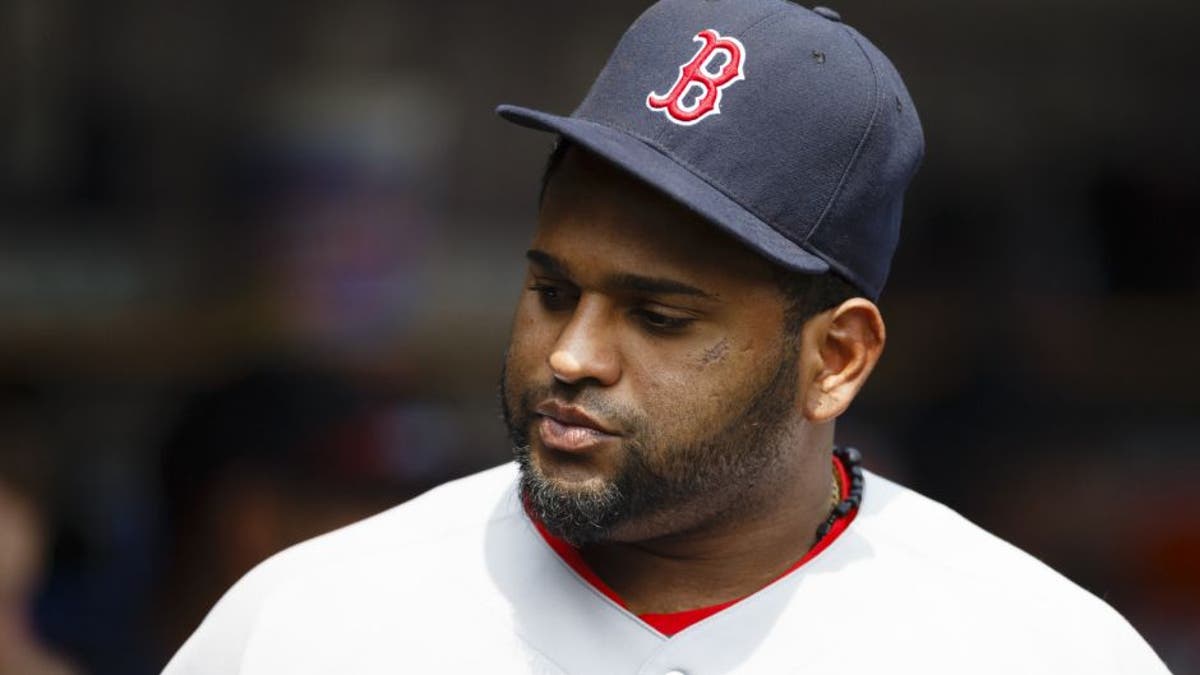
Pablo Sandoval has been nothing but a headache for the Boston Red Sox ever since he signed an astronomic $95 million contract with the team ahead of the 2015 season. Sandoval lost his starting job before the 2016 season even started, and the chances of a Sandoval return to the lineup grew more slim Monday when the team announced he will undergo exploratory surgery on his left shoulder.
The Red Sox did not announce a timetable for Sandoval's return, but the surgery reportedly puts his entire season in doubt. It also does not help improve his numbers in Boston, which remain horrific while Sandoval sits out.
Here's a look at some of the worst numbers from Sandoval's troublesome career so far with the Red Sox.
Sandoval owns a -2.2 WAR (wins above replacement) during his time in Boston, which means the Red Sox would be much better off on the scoreboard by throwing a replacement player in at third base instead of Sandoval. They could also save themselves some serious cash by doing so. Granted, that's basically what the Red Sox did by starting Travis Shaw at third this season instead of Sandoval, but it's still a frustrating number to see when the player with the terrible WAR is earning $17 million this season for his negative contributions. In contrast, Shaw is on the books for $515,000 in 2016.
To put a more accurate price on the Red Sox's misery, consider the cost of Sandoval's at-bats this season. He went 0-for-6 with four strikeouts and a walk. He will be paid $17 million, so if he does not return this season, his price per at-bat will be $2.83 million. That's a lot of money for four strikeouts and a broken belt.
Sandoval's O-swing rate, which measures the percentage of pitches he swings at outside of the strike zone, is 46.65 percent over two seasons in Boston. That is a pretty poor reflection of plate discipline. Sandoval registered a 45.55 O-swing percentage in his seven seasons in San Francisco, and that includes a 53.3 value from his rookie season, which was much higher than the rest of his percentages with the Giants. So even the 45.55 number is skewed upward from what it tended to be during his Giants career. In summary, Sandoval is less disciplined at the plate for the Red Sox than he was during his time in San Francisco.
Although Sandoval's weight was an issue during his time with the Giants, his defense was generally OK. That's not the case with the Red Sox. According to a measurement from FanGraphs, Sandoval's UZR during his Red Sox career is a whopping -17.8 (-16.9 in his first season and -0.9 in his second). A -15 is considered awful, so to fall below that number is embarrassing.
Sandoval's OPS in Boston, .651, is way below his average from his seven years in San Francisco, where he had an .811 OPS. He never dipped below .700 in OPS with the Giants, so it was reasonable to expect Sandoval to put balls in play and get on base with the Red Sox. As mentioned previously, Sandoval's weight was an issue in both cities, so his significant drop in OPS with the Red Sox is especially concerning.
If Sandoval does miss the rest of the season, he'll have played in just 129 games over his first two seasons in Boston. During Sandoval's six full seasons with the Giants (that does not count his rookie season) he played fewer than 129 games twice in a single season -- once in 2011 and once in 2012, and both absences in those seasons were due to a broken hamate bone in his hands. Sandoval still was an All-Star in both of those years, and his performance when he came back was impressive.
That has not been the case in Boston. His total number of games last season (126) was actually decent relative to many other players on the Red Sox -- Dustin Pedroia, for example, played in just 93 games -- but Sandoval's abysmal batting average and poor fielding frequently made him an unpleasant sight for Sox fans to see in the lineup.
